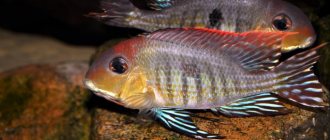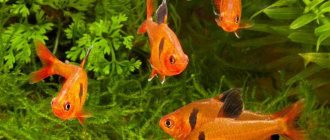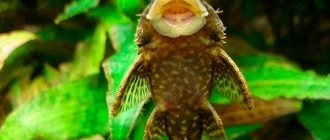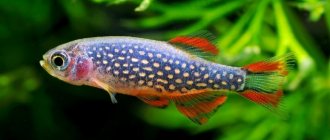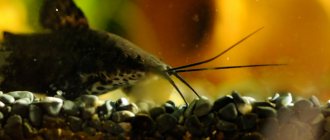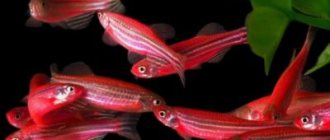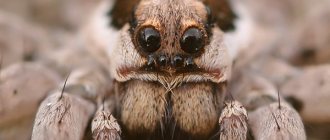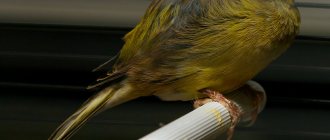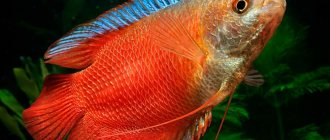Recently, people are increasingly getting turtles as pets, since they are already pretty tired of standard cats, dogs or parrots. The European marsh turtle has become one of the favorite species for breeding and keeping. She is quite intelligent, unpretentious to food and care, and quickly adapts to life in captivity. These reptiles spend most of their lives in the water, but sometimes they come out onto land to bask in the sun or a special lamp. What marsh turtles eat at home, how to care for them and how much they sleep is described in this material.
Description of the marsh turtle
If we were painting a portrait of a marsh turtle, then its most important detail would look like this: an almost oval carapace of small height (about the term - help below), in which the width of the rear part is clearly greater than the front. In the largest individuals, the length of the carapace reaches 20 centimeters or more .
The carapace is the convex dorsal shield of a turtle's shell, consisting of a bone base and a horny covering.
Due to the fact that these turtles mainly live in the water element, the carapace of the animal is tightly pressed to each other, and it itself is streamlined in shape, without any protrusions, the fingers are connected by membranes. The turtle's paws have large and sharp claws, which is logical, since it is a predator. With their help, the turtle is able to tear its prey apart (your hand will not be the object of the hunt, but you should not let your guard down when communicating with your pet).
The tail of this reptile is quite long (up to 12 cm, which is often ¾ of the entire length of the shell). Its main function in the water is to guide and assist in maneuvering, creating a counterweight and maintaining balance during sharp turns. Moreover, in females it is shorter than in males.
The average weight of a reptile is 1.5 kg.
As for the color scheme, the swamp pet’s carapace is usually dark (from olive and khaki to almost black), but the plastron is light (closer to yellow). The body is densely covered with small light splashes and spots. Eyes depend on gender: in males they are most often red, and in females they are light shades .
Habitat
The known European marsh turtles can be seen in large numbers in Europe, Asia or Africa. Their habitats are bodies of water (from swamps to streams, rivers and ordinary puddles somewhere in the forest). Water is an absolute comfort for them, but they also love to bask in the sun, and to do this they have to crawl onto the shore or rocks protruding upward. These creatures try to catch the sun's rays even on the coolest and gloomiest days. But as soon as the turtle hears an extraneous sound, it will immediately run into shelter (water) from the unpleasant attention. Strong paws allow the swamp beauty to swim quickly, and its claws allow it to instantly bury itself in the mud or under foliage near the shore.
With the arrival of cold weather, in mid-autumn, picky animals hibernate : this is how they escape the winter cold.
With the warmth of spring, they wake up again.
Lifestyle and behavioral characteristics of marsh turtles
Forest, steppe and forest-steppe areas with natural fresh water bodies are more suitable for these inhabitants. They love to settle in lakes, ponds, swamps, slow-flowing rivers and large water canals.
The most convenient for reptiles are reservoirs of natural origin located on flat terrain - with gently sloping banks and shallow areas, abundantly overgrown with plants and well heated. But you can also find the European marsh turtle in the mountains, where there are small bodies of water.
With the help of experiments, it was possible to prove that representatives of this species are capable of surviving for 2 days at a water temperature of 18°C and the absence of air. This confirms their high viability. During the mating season, adult turtles, ready to breed, can crawl out of the water and set off on a 300-500-meter journey inland.
Swamp turtles are excellent swimmers and divers, and they are also capable of staying under water for a long time, rising to the surface every 10-15 minutes. These animals are semi-aquatic reptiles and are most active during the daytime. They love to crawl onto land or islands and bask in the sun's rays.
Reptiles spend all the time that is not spent resting in search of food - they can eat all day long. And at night they go to sleep at the bottom of the reservoir.
What to feed a swamp turtle?
Thanks to the omnivorous nature of the European tortoise, it is not difficult to create a diet for its diet, but here you need to remember one important point: when feeding, your pet will be very aggressive. In this regard, when feeding fish, beef hearts, shrimp, liver, frogs, crickets, mice, snails or other food, remember to be careful, there is a risk of losing a finger or injury to a limb.
If you give your pet live food from time to time (for example, throw live fish into the water, which it will eat completely), it will retain its ability as a hunter. The younger the turtle, the more often it should be fed. But you can’t overfeed the animal, since by nature these reptiles are gluttonous.
The optimal feeding frequency is once a day for young animals and once every 2-3 days for adults.
How to keep a marsh turtle so that it is comfortable in your house or apartment, and the pet does not get sick? Diversify your diet with special vitamins and calcium. A good ready-made food should include such additives, and if you are a supporter of natural food, follow a healthy diet yourself. a sufficient amount of vitamin B3 must be produced in the pet’s body , and this is achieved by a certain solar spectrum - purchase a UV lamp for heating.
Features of the feeding process
Since river turtles spend most of their lives in water, feeding should take place in their natural habitat. But when feeding, several important conditions should be observed:
- It is advisable to feed your pet with live insects. She will be able not only to enjoy her favorite food, but also to warm up in the process of hunting for prey;
- It is recommended to give meat and fish food in small portions;
- Due to the fact that freshwater fish itself catches food with its paws in the water, it is better to cut meat or fish into medium pieces;
- You should not get carried away with plant food, because the turtle is practically not interested in it;
- You can give your pet shellfish every day; he definitely won’t refuse this delicacy.
The river turtle is a very voracious amphibian. This means that the water in the aquarium will quickly become dirty, so it needs to be changed daily. It is important that your pet is always kept in a clean terrarium, otherwise he may develop serious health problems.
The water in the aquarium needs to be changed immediately after a meal. While the home is being cleaned, the reptile can be landed on land. During this period, she will be able to warm up and enjoy her comfortable and well-fed life.
Conditions for keeping a swamp turtle
You can understand whether a marsh turtle can be domestic or not by the fact that there is no need to create a swamp for it in the owner’s apartment. A terrarium or aquarium is quite suitable for her. However, new properties must be very spacious: at least 120 liters for one individual. The territory is conventionally divided into 2 parts (island and water), between which a connection is installed in the form of a ladder. The depth of the liquid should be at least 15-20 cm. Above the land, at a height of at least 20 cm, we place a UV lamp with a heating function. Additionally, you will need a filter and a heater for water (used when the temperature drops below 20 degrees). It is also important to monitor the air temperature (directly under the UV lamp it should not be above 28 degrees and below 23) . When the thermometer is low, the reptile can fall asleep for a long time, and it is quite difficult to bring the turtle out of hibernation. If it is too high there is a risk of burns. When artificially determining the length of daylight hours, focus on half a day (12 hours).
To prevent your beauty from polluting the water during feeding, you can transplant her during meals to a place that will become a “dining room” - a basin or a separate bath. After this, the pet returns to its habitat.
For aesthetes, we inform you: turtles do not need any additional decor (from a nice flooring to plants inside the aquarium). And such minimalism will make it much easier for you to clean your turtle’s home and take care of it.
Taming a swamp turtle
There are swamp turtles that are distinguished by a strong level of aggressiveness. This must be taken into account when picking up your pet. The correct way to do this is to take the animal by the edge of the back of the shell to protect yourself from the head on a fairly long neck. However, many owners, when caring for swamp turtles, note that the latter are shrewd enough not to bite. On the contrary, they even stretch their heads towards the owner. And some owners initially teach the animal to eat with tweezers.
Some experts on European marsh turtles are sure: if you follow all the recommendations for keeping a marsh turtle at home (regularly feed your pet, care for it, set an exact feeding schedule), then the predator will even begin to recognize the person. And your visit will be an impetus for him to a conditioned reflex and almost friendly behavior. Be patient - everything will work out.
In the communication of these reptiles with children, other animals and their fellow tribesmen, it is believed that such contacts are best limited; remember the bloodthirstiness of turtles. They behave biasedly even towards their own brothers-in-arms and often hurt each other. Attempts to create a common territory for several individuals in one aquarium often ended with someone becoming not just a rival, but also food.
Turtle's relationship with drinking water
Aquatic species of turtles do not need additional drink, since they a priori moisten any food with water due to the lack of saliva in the mouth.
Land reptiles have a special relationship with drinking water. The structure of their head does not allow them to fully drink - when water gets into their mouth, it pours out through their nostrils. There are species that never drink at all, content with moisture from food. Others need very little water.
In addition to food, the source of water is also the external environment - moisture enters the body during swimming or baths. Serious dehydration can cause a reptile to drink water. To prevent this from happening, it is important to properly plan your diet, including juicy fruits and vegetables. For example, fresh dandelion and clover leaves consist of 85% water, which will be enough for the reptile’s body.
Experts also recommend giving turtles baths. To do this, once a week I pour a little water into a shallow container and place the pet there. 30 minutes of bathing is enough for him to replenish the existing lack of moisture. Water should not enter the reptile's nostrils.
About turtle health and diseases
Common diseases among these creatures are various types of pneumonia, skin fungus, etc. Swamp turtles are not as hardy as red-eared turtles, and therefore require special attention, responsibility and health care. So, if the European marsh turtle is not kept at home correctly, the pet may die . This is why proper care of it is important. Are you able to create it?
A number of turtle ailments are directly related to unsanitary conditions in their territory. For example, dirty water often leads to bacterial eye diseases or infectious inflammation. Therefore, it is necessary to frequently change the liquid, clean the space, or place the pet separately in the “dining room” during feeding.
Reproduction
After hibernation, the marsh turtle becomes sexually active, so the breeding season usually occurs in the spring. Sexually mature individuals mate near water bodies, after which, in the second half of spring - early summer, the female turtle lays eggs. The marsh turtle, whose eggs are eaten in some countries, lays several clutches of 10 to 20 eggs each per season. The eggs are laid in a dug hole, not far from the water, so that the small turtles can reach the reservoir within an hour. After a couple of months, small turtles are born.
Those who breed swamp turtles at home note an interesting fact. During the incubation period, the sex of the future turtle is affected by the ambient temperature. So, at temperatures below 25 degrees, male turtles are likely to hatch from eggs. If the air temperature exceeds 30 degrees, then most likely females will be born.
Habitat in nature
As already mentioned, the European marsh turtle lives in a wide range, covering not only Europe, but also Africa and Asia. Accordingly, it is not included in the Red Book.
She lives in various bodies of water: ponds, canals, swamps, streams, rivers, even large puddles. These turtles live in water, but they love to bask and climb out onto rocks, snags, and various debris to lie in the sun.
Even on cool and cloudy days, they make attempts to bask in the sun that breaks through the clouds. Like most aquatic turtles in nature, they instantly flop into the water at the sight of a person or animal.
Their powerful paws with long claws allow them to swim through thickets with ease and even burrow into muddy soil or under a layer of leaves. They love aquatic vegetation and hide in it at the slightest opportunity.
Is it necessary to change the water?
The water in the terrarium must be constantly clean. The filter partially copes with this, but the water should be changed regularly to prevent the development of diseases. A complete water change and cleaning of the walls of the terrarium are carried out every 1-1.5 months, and partial - as needed. To ensure long-term preservation of the cleanliness of the terrarium, you should give food to your pet outside of it, and not feed the marsh turtle directly in the water. Settled tap water is suitable for filling the aquarium.
Lifestyle and behavioral characteristics
Swamp turtles prefer to settle in forest, steppe and forest-steppe zones, but are also quite often found in fresh natural bodies of water, represented by swamps, ponds, lakes, slowly flowing rivers and large water canals.
Optimal for life are flat natural reservoirs with gently sloping banks and very well-warmed shallow areas with a sufficient amount of vegetation. Some individuals are found even in mountain ranges.
During the period of mass reproduction, adult, mature turtles are able to leave the reservoir and move away from it at a distance of 300-500 m. The reptile can swim and dive excellently, and can also spend a long time under water, rising to the surface every quarter of an hour. Swamp turtles belong to the category of semi-aquatic animals that are active during the daytime and bask in the sun's rays for a long time. The turtle can feed throughout the day, and at night goes to sleep at the bottom of a natural reservoir.

